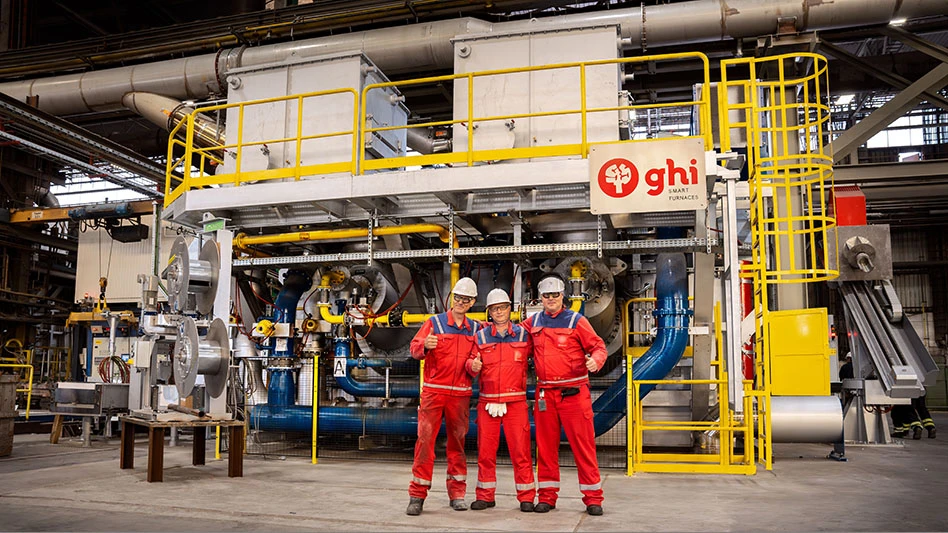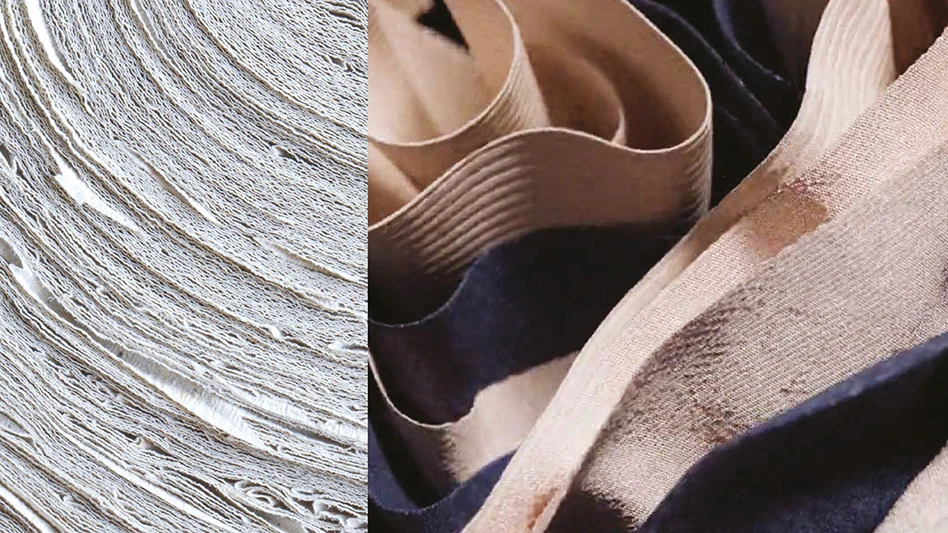 Few things sound sweeter to an Institute of Scrap Recycling Industries Inc. (ISRI) member than people talking about recycling. For real music to their ears, however, recyclers need to tune into the Cateura Youth Orchestra’s Orquesta de Instrumentos Reciclados de Cateura, or Recycled Orchestra. Every one of the instruments played by this youth group is produced from reclaimed and repurposed materials.
Few things sound sweeter to an Institute of Scrap Recycling Industries Inc. (ISRI) member than people talking about recycling. For real music to their ears, however, recyclers need to tune into the Cateura Youth Orchestra’s Orquesta de Instrumentos Reciclados de Cateura, or Recycled Orchestra. Every one of the instruments played by this youth group is produced from reclaimed and repurposed materials.
Reuse, repurpose
Like many cities in Latin America, Cateura, Paraguay, is a town outside the capital city where the residents must scramble and scrape just to make a living. Families often have no money to spend on a flute or a violin, even for the most promising sons or daughters of the community. This is a community where a violin, even if purchased used, can cost as much as a house.
Cateura has a massive landfill, and people from the town survive by collecting and reselling garbage from that landfill.
“In Latin America, recycling is not a way to handle trash,” says Dr. Daniel C. Piper, curator of musical instruments for the Musical Instrument Museum (MIM), Phoenix, and an ethnomusicologist by training. Instead, materials are reused and repurposed out of necessity in the region.
Cateuran students first started using instruments made from repurposed materials in 2008 with the help of an enterprising music teacher.
Visionary Cateuran music teacher Favio Chávez saw a chance to do the ultimate in landfill mining. He gathered a small team to plunder the landfill for materials and to construct an ensemble of “recycled” instruments. That gave birth in 2008 to Orquesta de Instrumentos Reciclados de Cateura.
“The world sends us garbage. We send back music,” says Chávez of Orquesta de Instrumentos Reciclados.
Chavez actually is an environmental analyst by training, not a music teacher. As an environmental analyst, he had worked—unsuccessfully—to form an environmental committee on recycling in Paraguay. Today, his focus is on music.
Yet, Orquesta de Instrumentos Reciclados de Cateura is not unique. Throughout history—right up to the present—people have repurposed materials found in nature for musical purposes. Flutes are made from reeds, and gourds are used in many cultures to carry water before they become the resonators in drums or other instruments.
Think, for a moment, of the popular Jamaican steel drum orchestras. These groups, too, are the result of repurposing of industrial scrap material—in this case, the ubiquitous 55-gallon steel drums used to store and transport oil.
“A 55-gallon drum is an instrument that can play all the notes. It is fully chromatic,” the MIM’s Piper says. In fact, professional orchestras have built performances on 55-gallon drums.
Piper says another of his favorite instruments is a castor oil electric guitar from South Africa.
“Children find hope by making music on instruments built from recycled trash,” Piper says.
Performing arts
The MIM was so taken with the reuse project that it turned over a section in its brand new facility to an exhibit about the Orquesta de Instrumentos Reciclados de Cateura, which can be described as reuse and recycling on steroids.
A cello is made of oil cans, scraps of wood, an old spatula and clunky pieces of a meat grinder. Violins are built from metal glue canisters and rusty forks, which hold the strings together. Water pipes, bottle caps and buttons are materials for flutes and saxophones, while X-ray films serve as drumheads.
Since many of the families in Cateura make their livings on the trash piles, they are attuned to looking for things that might have another use—items that could be repurposed and recycled to their benefit.
 A Cateuran woodworker, a fellow with a fifth-grade education, fashions the necks for the stringed instruments. While his work cannot be compared with that of the famed Italian luthiers, the instruments are quite mellow and produce a full sound.
A Cateuran woodworker, a fellow with a fifth-grade education, fashions the necks for the stringed instruments. While his work cannot be compared with that of the famed Italian luthiers, the instruments are quite mellow and produce a full sound.
To a person with his or her eyes closed but ears open, the music produced by a high school student using an oil-can cello will sound just as sweet as the music produced by a student using a proper cello.
“In just a few years, their innovation has led to a thriving music school in Cateura and a youth orchestra that performs internationally,” Piper says. “For members of the Recycled Orchestra, material poverty is not an obstacle to a life rich with music. They have each learned to value greatly how music impacts their lives, helping them express creativity, build self-confidence and strengthen community.”
At one point, Chavez intended to use the recycled instruments as student instruments for younger musicians. Those who proved themselves to be dedicated musicians, willing to practice and maintain their instruments, could graduate to a “real” instrument.
It turned out he had the idea backward. So much attention has been given to Orquesta de Instrumentos Reciclada that there is now cachet to being in the youth ensemble. In fact, those students in the Recycled Orchestra have brought their instruments—complete with spatula to keep the strings up—around the world.
Sharing sounds
The Paraguayan students recently brought their instruments constructed of reclaimed material to Phoenix, where they also played a number of concerts.
While in town, the students from Paraguay were joined by students from Phoenix on a visit to the city’s North Transfer Station.
The recycling professionals in Phoenix were fascinated by the students from Paraguay and by their musical instruments. The state of recycling in Paraguay and in Phoenix were discussed. Likewise, the students discovered a lot of materials at the Phoenix transfer station that were ripe for reuse as melodic instruments.
While at Phoenix’s North Transfer Station, the students were mentored by local sculptor Joe Willie Smith, who has made his artistic mark by making metal instruments from discarded industrial or residential materials. He typically uses contact microphones to help project their sound.
Performances by La Orquesta de Instrumentos Reciclados are interactive. Each student speaks for a minute or two about his or her instrument. They participate in workshops with other students. While at MIM, the students put on three separate concerts. Each was sold out.
Phoenix’s MIM is now home to a number of recycled instruments, including:
- a viola made from a tin paint container, recycled wood and a fork as a tailpiece;
- a violin whose body was cut from a metal commercial glue canister covered with Portuguese writing and symbols warning of toxic fumes;
- a flute made from a tin water pipe, lock pieces and a spoon handle;
- a rotary valve trumpet made from recycled metals, including worthless coins serving as valve caps;
- a soprano saxophone constructed from a tin water pipe, metal bottle caps, plastic buttons, a metal spoon and fork handles;
- a drum with chest X-ray films instead of animal skins as drumheads;
- a cello made from a PetroBras automotive oil container from Brazil with used strings held in place by a spatula; and
- a double bass made from a metal calcium carbide container and bolts with a fingerboard and scroll salvaged from a bass smashed in a car wreck.
Piper says his favorite instrument is the drum. “Its construction is not as complicated as the other instruments,” he admits. Yet, if one looks closely at the drum head, he or she will see a chest X-ray. It turns out that X-ray films are pretty common in the landfill and make an ideal membrane for a drum.
While this practice would give U.S. hospital officials ruled by HIPAA (Health Insurance Portability and Accountability Act) regulations a heart attack, Paraguayan hospitals simply toss medical records into the trash.
MIM’s exhibit features this inspiring story and the innovative instruments used by the Recycled Orchestra in its Latin America gallery exhibit and docent minitours. The Recycled Orchestra exhibit features eight recycled instruments from Paraguay and video and images of the youth orchestra and the village of Cateura.
The Recycled Orchestra came to the attention of MIM and to others in the United States through Alejandra Amarilla, a filmmaker and native of Paraguay.
The documentary film Amarilla produced, tentatively titled Landfill Harmonic, is scheduled for release in 2014. In the meantime, check out the You Tube video at www.youtube.com/watch?v=sJxxdQox7n0. More information also is available at www.landfillharmonicmovie.com.
The author is a Cleveland-based contributing editor to Recycling Today. He can be contacted at curt@curtharler.com.

Explore the March 2014 Issue
Check out more from this issue and find your next story to read.
Latest from Recycling Today
- ReElement, Posco partner to develop rare earth, magnet supply chain
- Comau to take part in EU’s Reinforce project
- Sustainable packaging: How do we get there?
- ReMA accepts Lifetime Achievement nominations
- ExxonMobil will add to chemical recycling capacity
- ESAB unveils new cutting torch models
- Celsa UK assets sold to Czech investment fund
- EPA releases ‘National Strategy to Prevent Plastic Pollution’





